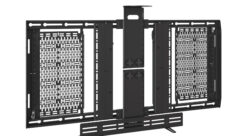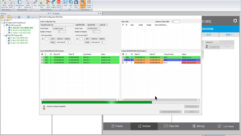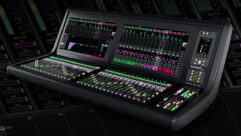The Buzz: Installation Spotlight: Via Christi Health System, Wichita, Kan.
Jun 1, 2007 12:00 PM,
By Jessaca Gutierrez
Replacing Bulletin Boards
The Via Christi Health System in Wichita, Kan., employs more than 5,000 people in more than 80 campuses throughout the city. Communicating with all those people in multiple locations is a large task for the hospital system — a task that was complicated for a long time because the company was working without modern digital communication tools designed for that purpose.
Traditionally, Via Christi used physical bulletin boards and email to post announcements, events, or any other relevant information to keep employees in the know about events at the company. But even email has drawbacks in this kind of environment. Although it’s a major communication tool, it wasn’t reaching many hospital employees whose schedules involve moving continually between patients, rather than staying put in a single office location. Old-fashioned bulletin boards, on the other hand, were useful for providing information in passing, but posting this information was labor-intensive, with no guarantee that the employees would actually see it.
“It was getting to be a pain, with laminating and driving to each location to put up this information on these bulletin boards,” explains Roz Hutchinson, director of public relations for Via Christi, one of the staff members who created and posted this information. In a staff meeting, Hutchinson mentioned how labor-intensive the bulletin boards had become, which sparked Via Christi’s manager of media resources, Phil Omenski, to do some research on alternatives. Online doing that research, he discovered a solution from Shawnee, Kan.-based Rise Vision.
Rise Vision’s 2RU Rise Engine multimedia player connects LCD displays directly to the company’s proprietary Rise Display Network digital content management system, which uses Internet access to deliver information to the display from anywhere. Along with the subscription to the service comes headline news, local weather, sports scores, and financial quotes that are displayed along with uniquely created content.
The Rise Display Network offered Via Christi a more modern way to directly provide information to employees, minus the time-consuming hassle the bulletin boards involved, and in addition, it gave employees access to a news and information source at work.
The hospital elected to initially install two signage units, one at its St. Joseph campus and one at its St. Francis campus. The biggest concern was making sure the web-based units, which would use the hospital’s intranet system, wouldn’t impact the integrity of the hospital’s security. Working with the hopsital’s IT department, Rise was able to lock down the Rise Engine with the hospital’s security systems for spyware, virus protection, firewalls, etc., as well as to define unique, secure ports through the hospital’s firewall to communicate with Rise’s servers to receive updated news, weather, and bulletins.
After the locations were chosen for the displays, the hospital’s IT department installed power, cable, and Internet drops for each display. Rise took over the installation from there, installing NEC 4610AV 46in. LCD 16:9 displays, which were also purchased from Rise, and the Rise Engines — essentially providing clients with a simple one-stop shop for digital signage solutions.
The signage displays feature a splitscreen with CNN and weather running on two-thirds of the screen and the rest of the screen real estate devoted to content the hospital has created. “We elected to go with CNN on one side that allows us to have fresh content as a draw,” Hutchinson says. “Otherwise, if you have a loop video running, it becomes [as] invisible as a bulletin board.”
Creating content for the signage is simple too. Clients are able to use any graphics program, such as Adobe Photoshop or Microsoft PowerPoint, to create content, which is then converted to a JPG or BMP using the web interface of the Rise Display Network. The Rise Display Network also allows clients to monitor, review, and edit the content from their desktop.
The Rise Display Network can also run Flash and MPEG, AVI, or QuickTime video files, which is a feature that is proving priceless to Via Christi. Now, the hospital can run its own CEO messages and commercials — something it couldn’t do through email or on a bulletin board.
In the end, the displays cut time all around — from the time spent traveling to time spent cutting and pasting — and the content can go up immediately, not several days later, so employees are informed sooner and better than they were before.
Although Hutchinson is still currently using bulletin boards at many locations, plans are in the works to install more signage units at the other company campuses. At press time, the hospital was installing an NEC signage display at its Good Shepherd campus and using a 40in. Samsung LCD at its Our Lady of Lourdes Rehabilitation Center, all to be part of Via Christi’s Rise Vision Network.
SUBSCRIBE TO SOUND & VIDEO CONTRACTOR E-NEWSLETTERS!
- Sound & Video Contractor EXTRA
Systems Integration Special Focus series:
- Houses of Worship
- Corporate AV
- Residential AV
- AV Over Fiber
- AV in Education
Breaking industry news in your email inbox every other week!
Subscribe atwww.svconline.com










